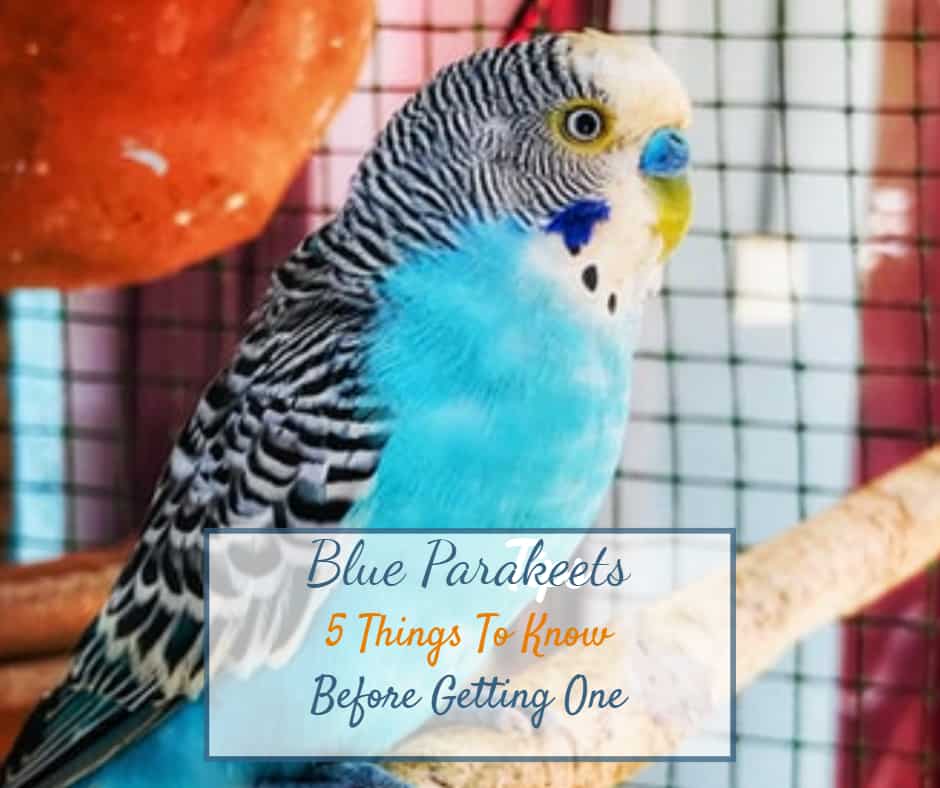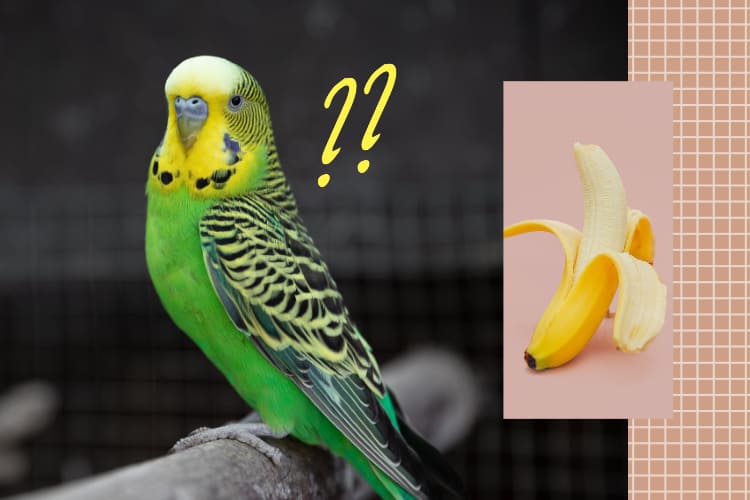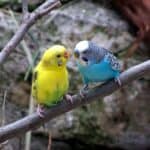A parakeet or budgie is a small bird type that originates from Australia. It has a Latin name that roughly means a songbird with wavy lines, which is an accurate representation of this well-known bird.
There are more than 16 known types of parakeets and they are subdivided into two groups: blue and green. Typically, we see a green parakeet. But have you ever seen a blue one?
Well, you must have been missing out on a gorgeous-looking bluebird. In this article, we will be learning more about the blue-winged parakeets, their ecology, behavior, foods, and more.
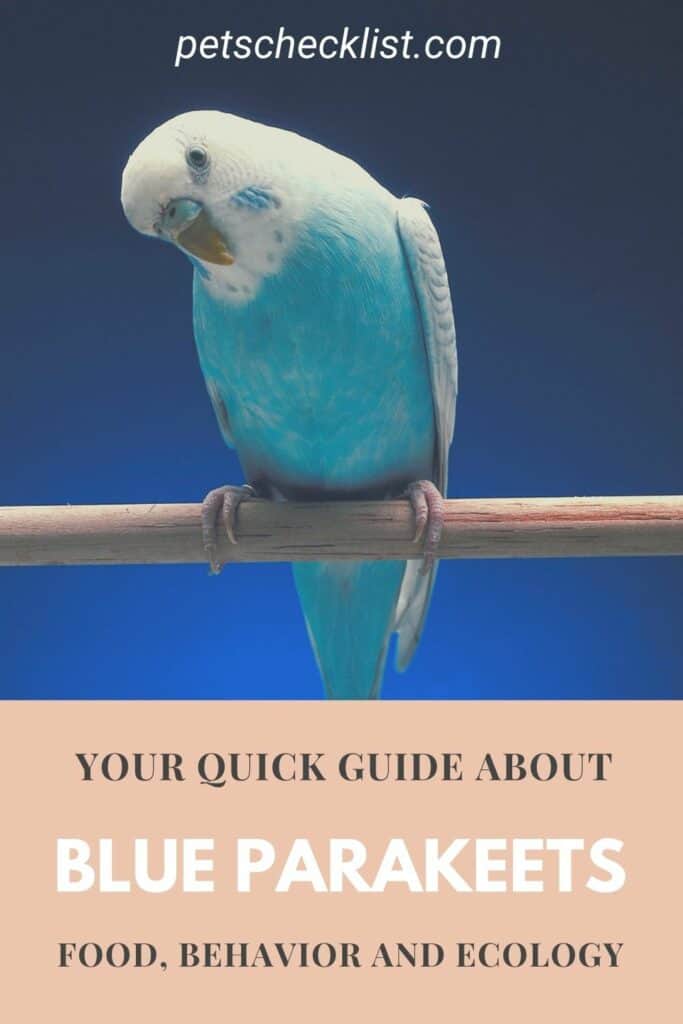
Table of Contents
What is a blue parakeet?
A blue parakeet is a small, socially extroverted bird that requires more care and attention than large parrots. They are playful and cheerful birds that show their dedication to their owners. Blue parakeets make great pets.
They are one of the most genuine feathered companions that you will ever meet. Like all animals, blue parakeets have their way of interacting with people. Blue parakeets can talk and mimic voices and tones.
They can imitate the sounds of doorbells, footsteps, and even the noise of a washing machine. It is surreal to see an animal like that, but most importantly, it is enjoyable to hear. They are naturally active little creatures that love to bond with people.
Before considering to have one, you must know that a blue parakeet can live up to 15-20 years if given proper care and affection. What makes them more fascinating to keep is that they love to play with their toys. Toys inside their cage are essentials for their mental stimulation.
Understanding their behavior takes time and patience. Blue parakeets can be friendly, but they are moody. One moment you will see them happy, roaming around their cage, and the next minutes, you will find them plucking their feathers. It is a sign that they are bored at the moment and need attention from their owners.
Blue Parakeets – Quick Facts
| Lifespan | 15 to 20 years |
| Conservation status | Least Concern (Population stable) |
| Scientific name | Psittacula columboides |
| Higher classification | Rose-ringed Parakeets |
| Order | Parrots |
| Phylum | Chordata |
| Rank | Species |
Are blue parakeets good pets?
Most of the time, we don’t get to choose the appearance of our pet. We have our plans in mind until we go to a pet store and check our ideal pet’s availability. Surprisingly, deciding makes it more difficult as there is a cute little bird that caught our attention through its undeniable and adorable color.
You bring home a blue parakeet and promise to make them feel welcome and accommodated. A blue parakeet is a great feather companion to keep.
They spend the majority of their life inside the birdcage. At first, it might be difficult for them to adjust to their new environment but don’t give up and be more patient as they can learn to live their new life with you.
Since blue parakeets should have their own space, you must prepare a warm and secured shelter. As a pet owner, you should take full responsibility for the birdcage. Clean it every other day and change the bedding at the bottom of the birdcage to make the best living situation.
One of the main reasons why you should have a blue parakeet at home is that they are fun and alert, cute little birds that make a great addition to your family at home. The delightful characteristics of a blue parakeet can enlighten everyone’s day. A blue parakeet is not your typical parakeet. Don’t be a fool with their small size as they are more than just their size. They are intelligent pet birds.
Blue parakeets can guarantee to give a new level of amusement than your typical pet dogs or cats. While your guest is waiting in the living room, your blue parakeet can talk to them. It is entertaining for a visitor to have a little chitchat with a bird. That’s why if you are thinking of bringing a blue parakeet at home, this is a sign.
Cool facts about blue parakeets
1. Blue parakeets are monogamous and have long-lasting relationships
Given that pets are loyal to their owners, blue parakeets like a stable and long-time relationship with their mate. They will only start a new relationship if their partners have died. But what you don’t know, blue parakeets are emotionally attached. They go through grief after their mate’s death, and worst, they may even die.
2. Blue parakeets have a clear vision
Compared with mammals, birds have large eyes. A big-eyed means better eyesight, and it is essential for a feathered companion. You all wondering what a blue parakeet sees. They can see even the smallest dust/dirt. They can move each eye independently of the other.
3. Blue parakeets love to play with water
In the wild, birds love to take a bath. As a pet owner, you should provide them a short and thick bowl with lukewarm water, place it on the floor of the cage and let your blue parakeet enjoy taking a bath there. You can also purchase a birdbath that hangs from the side of the birdcage. It can prevent moisture on the floor of the cage.
4. Blue parakeets have the same illness as humans
Just like humans, parakeets can suffer illness. They are sensitive in terms of their health condition. They can avoid it through our proper care.
However, things might get worst if you don’t take the immediate initiative to bring your blue parakeet to a veterinarian.
Asthma, depression, diabetes, bronchitis, and anemia are some of the illnesses that might cause serious trouble to your blue parakeet’s condition.
5. Blue parakeets can use body languages to express their emotions
Blue parakeets can sing and can learn words. But did you know that blue parakeets use their body language to show their feelings towards their current situation, owners, and even with their better half?
Their body language is complex and diverse as they are exposing different kinds of movements and gestures.
Can blue parakeets talk?
Blue parakeets can talk. They sure can, but you need to teach them first. One of the specialties of a blue parakeet is singing a song and learning more than 100 words from its owner or trainer. A blue parakeet should be in a social nature where its owners would love to interact with them.
Blue Parakeets can’t do well alone. That’s why it is advisable to get at least a pair of parakeets. It is beneficial to both parrots as they develop their social consciousness and form a good parakeet relationship.
They are known for being very vocal, and if they have a mate with them, you will hear them chirping in your home. It may sound irritating or relaxing, but it depends on how you will react.
A blue parakeet’s voice isn’t the same as humans. Since they are unequipped with vocal cords, they can’t produce sounds using their larynx. Their beak is their way of making sounds. They use it every time they mimic sounds or attempt to speak a single word or communicate with their partner.
Although they are intelligent enough to learn words, they are still unable to understand the meaning. Teach them repeated words and sounds as early as possible. You can also train them to respond in hand gestures.
Behavior and ecology
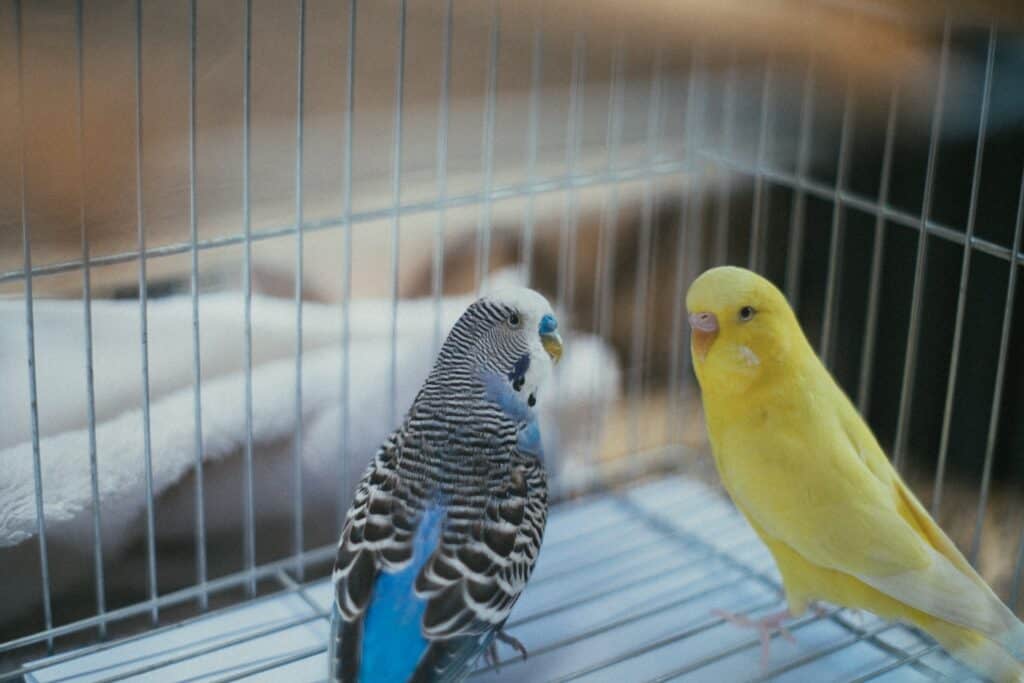
Blue parakeets are bright pets with different personalities. Sometimes, you will notice a change in their behavior that can bring curiosity to you.
They respond to changes in their environment in their ways. If you see them acting strangely in their behavior, do not hesitate to look for the cause. It may be something serious that can trigger their mental, physical, or emotional health. Anything can happen because of their sensitivity.
Some people underestimate the behavior of a bird. A blue parakeet can be easily hand tamed and can be loyal, friendly, observant of its surroundings.
They are naturally social birds and won’t do well in a life of isolation. If they receive enough attention, they can be caring and affectionate in return. It is indeed a pet-quality bird to keep.
There are many actions that your blue parakeets can show based on their emotions. Some of their body languages are too obvious whenever they are irritated, scared, happy, bored, hungry, and when they pluck their feather.
When you see them singing, they are happy and contented with what they feel. Generally speaking, they convey their emotions through actions.
A blue parakeet pet bird should stay in a spacious cage. Although these pets are tiny birds, they need to be in a comfortable birdcage doing their daily routines like eating, exercising, and playing with toys.
You should avoid placing the birdcage in the kitchen. They can smell fumes while you are cooking. Blue parakeets should not be exposed to toxins as they are sensitive to their surroundings.
Parakeets are fine with children as long as you have supervision and guidance. Some children are careless in handling a pet bird.
Tell them to be gentle in taking good care of the birds. A bird’s beak can hurt its sensitive fingers. Be careful as blue parakeets can act exaggerated.
What does a blue parakeet eat?

A blue parakeet should eat a healthy but strict diet to maintain a healthy living and full development. Some common foods that a blue parakeet needs are fruits and vegetables. Did I mention parakeets love bananas?
They enjoy eating apples, cucumber, broccoli, carrots, and other fresh foods. Before you give them food, you have to wash them carefully. Cut the food into small portions, make sure that your blue parakeet can handle the food.
It is not advisable to feed a blue parakeet with seeds only. There is a chance of malnutrition that can lead to premature death in pet birds.
You can also feed your feather companion sprouted seeds, grains, legumes, and peas to provide nutrients that your pet bird needs. Feed your parakeet three times a day (breakfast, the afternoon meal, and bedtime).
If you need more information about what to feed your blue parakeet, consult a veterinarian to ensure giving them the proper nutrients.
Veterinarians will provide a meal pattern depending on the condition of your cute little companion. Also, check out our article about the different types of bird foods.
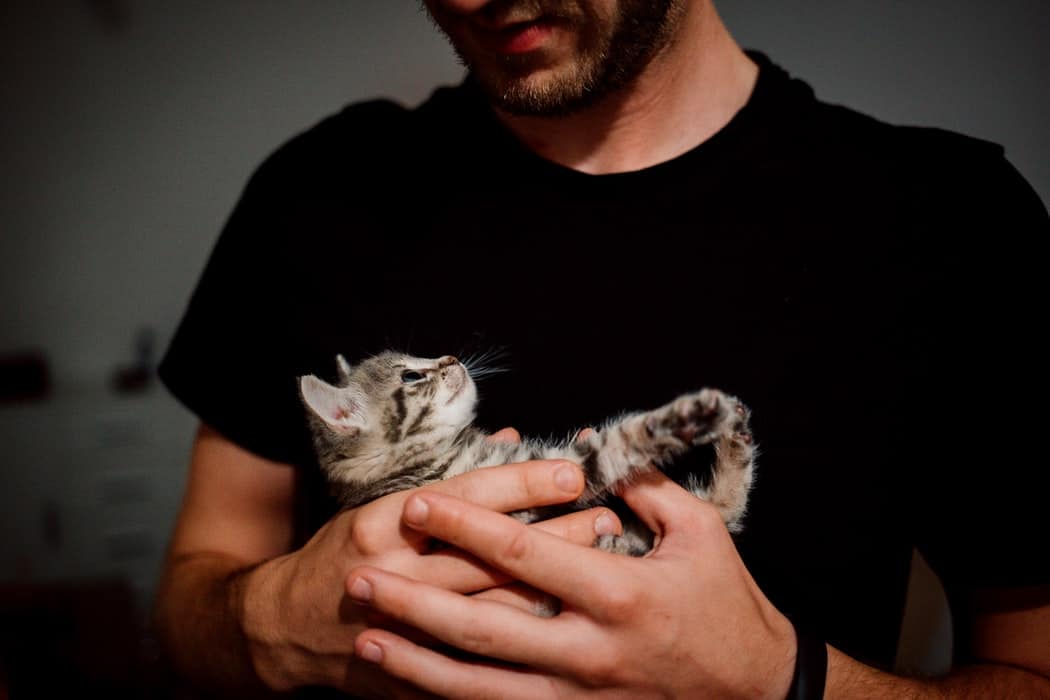
Hezekiah is a pet lover since birth, according to his parents. He started writing for the Pets Checklist in 2020. He is fond of playing with and taking pictures of different friendly animals around his neighborhood. He loves to read and write articles about pets, science, and music.

